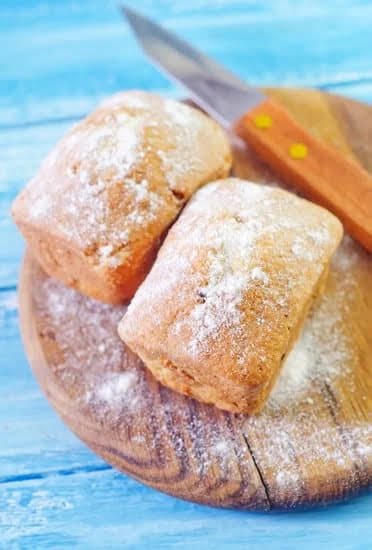Chocolate leaf decorations add a touch of elegance and sophistication to any cake, making them the perfect addition for special occasions or simply to elevate your everyday baking. In this article, we will guide you through the process of creating beautiful and edible chocolate leaf decorations for cakes. From selecting the right leaves to molding and applying the chocolate, we will provide step-by-step instructions and helpful tips to ensure successful results every time.
Not only are chocolate leaf decorations visually stunning, but they also offer a delightful burst of flavor when enjoyed alongside your favorite cake flavors. The smooth and glossy finish of the chocolate contrasts beautifully with the softness of the cake, creating a visually striking dessert that will impress your guests.
To embark on this creative culinary journey, you’ll need a few essential materials and tools – chocolate, leaves for molding, a paintbrush, wax paper, and more. But don’t worry if you’re new to chocolate work; we’ll provide a comprehensive list so you can gather everything you need before starting.
So why settle for plain cakes when you can easily elevate them with unique and beautiful decorations? Prepare yourself to be inspired as we guide you through the process of making chocolate leaf decorations for cakes. Let’s get started on this delicious adventure.
Materials and tools
To make chocolate leaf decorations for cakes, you will need a few essential materials and tools. Here is a comprehensive list of everything you will need:
- Chocolate: Choose high-quality chocolate that is suitable for melting and molding. You can use either dark, milk, or white chocolate depending on your preference or the design of your cake.
- Leaves for molding: Look for fresh, edible leaves that have a sturdy texture and distinct veins. Common edible leaves like mint, basil, or strawberry work well for this purpose. Make sure to pick leaves that are clean and free from any chemicals or pesticides.
- Paintbrush: A small food-safe paintbrush will be used to apply melted chocolate onto the leaves. Choose a brush that is soft with fine bristles to ensure even coverage and neat lines.
- Wax paper: This will be used as a surface for drying the chocolate-coated leaves. Make sure to have enough wax paper to accommodate all the leaves you plan to use.
In addition to these essentials, you may also want to have the following optional items:
- Parchment paper: If you prefer parchment paper over wax paper, it can be used as an alternative for drying the chocolate-coated leaves.
- Heatproof bowl and saucepan: These are needed if you choose to melt your chocolate using a double boiler method. The bowl should fit snugly on top of the saucepan without touching the water.
- Spatula or spoon: Use these tools to stir and smooth out the melted chocolate during the tempering process.
Before starting with making your chocolate leaf decorations, it’s important to gather all these materials and tools in one place so that you have everything at hand when needed. With these essentials ready, you can now move on to selecting and preparing the right leaves for molding in the next section of this article.
Choosing the right leaves
Choosing the right leaves is an important step in making chocolate leaf decorations for cakes. The leaves you choose will determine the shape, texture, and overall look of your chocolate decorations. Here are some tips on selecting the best leaves for molding, as well as suggestions for common edible leaves that work well for this purpose.
Tips for selecting the best leaves
When choosing leaves for molding, it’s important to select ones that are fresh, pliable, and free from any blemishes. Look for leaves that are medium-sized and have a distinct vein pattern, as these will create more interesting textures on your chocolate decorations. Avoid using leaves that are too large or small, as they may not mold well or provide enough surface area for the chocolate.
Common edible leaves for molding
There are many edible leaves that work well for making chocolate molds. Mint leaves are a popular choice due to their unique shape and refreshing flavor. Basil leaves also work nicely, adding an aromatic touch to your chocolate decorations. Strawberry leaves can be a great option too, with their delicate appearance and mild flavor.
Other edible options include lemon balm, rosemary, and lemon verbena. Each of these herbs brings its own distinctive flavor and visual appeal to your chocolate leaf decorations. Experiment with different types of edible leaves to find your favorite combinations.
Remember to always wash the chosen leaves thoroughly before using them as molds. This ensures that they are clean and free from any dirt or chemicals that may affect the taste or appearance of your chocolate leaf decorations.
Preparing the leaves
To create perfect chocolate leaf decorations for cakes, it is important to properly prepare the leaves before using them as molds. This section will provide step-by-step instructions on how to clean and prepare the leaves, ensuring a smooth and seamless process.
- Start by selecting fresh and undamaged leaves for molding. It is recommended to choose edible leaves that are sturdy and have distinct veins, as they work best for creating detailed imprints on the chocolate. Popular options include mint, basil, or strawberry leaves.
- Before using the leaves, it is crucial to clean them thoroughly to remove any dirt or potential contaminants. Begin by gently rinsing the leaves under cool running water, taking care not to damage them. Ensure that all surfaces of the leaf are cleaned properly.
- After rinsing, pat dry each leaf carefully with a clean kitchen towel or paper towels until they are completely dry. It is important to remove excess moisture from the leaves before proceeding as any moisture may cause the melted chocolate to seize.
- Next, inspect the stems of the leaves and trim off any excess length or uneven edges using a pair of kitchen scissors or pruning shears. This step ensures that only the leaf surface will be in contact with the melted chocolate, resulting in crisp and defined imprints.
- Once you have cleaned and trimmed your selected leaves, place them on a piece of wax paper or parchment paper with their vein side facing up. This will help facilitate easy removal of the chocolate leaf molds later on.
By following these step-by-step instructions for cleaning and preparing your chosen leaves, you will ensure that your chocolate leaf decorations turn out beautifully shaped every time. Taking the time to properly prepare the leaves sets a strong foundation for successful molding and creates stunning results that will impress everyone who sees your cake.
Melting and tempering the chocolate
Melting and tempering chocolate is a crucial step in creating chocolate leaf decorations for cakes. Properly melted and tempered chocolate results in a smooth and glossy finish, ensuring that your decorations not only look stunning but also taste delicious. Here is a detailed guide on how to melt and temper chocolate effectively:
- Choose the right chocolate: It’s important to use high-quality chocolate for the best results. Opt for chocolate that has at least 70% cocoa content, as it will melt more smoothly and have better flavor.
- Chop the chocolate: Break the chocolate into small, uniform pieces to ensure even melting. This can be done using a sharp knife or by placing the chocolate in a resealable bag and gently pounding it with a rolling pin.
- Double boiler method: The preferred method for melting chocolate is to use a double boiler setup. Fill a pot with about an inch of water and bring it to a simmer. Place a heatproof bowl on top of the pot, making sure it doesn’t touch the water. Add the chopped chocolate to the bowl and stir occasionally until fully melted.
- Microwave method: If you don’t have access to a double boiler, you can melt chocolate in the microwave as well. Place the chopped chocolate in a microwave-safe bowl and heat it in short intervals of 15-20 seconds, stirring well after each interval until all the pieces are melted.
- Tempering the chocolate: Tempering is essential for achieving a shiny finish and ensuring that the decorations set properly without becoming dull or grainy over time. To temper chocolate, remove two-thirds of the melted chocolate from the heat source and add small chunks of unmelted chocolate, stirring continuously until fully melted.
- Checking temperatures: Use an instant-read thermometer to monitor the temperature of your melted chocolate throughout this process. Dark or semi-sweet chocolates should be heated to around 115°F (46°C), while milk chocolate should reach 110°F (43°C). Be careful not to exceed these temperatures, as overheating can cause the chocolate to seize.
- Testing the temper: To check if the chocolate is properly tempered, smear a small amount on a piece of wax paper or parchment paper and allow it to cool for a few minutes. If the chocolate has a glossy appearance, snaps when broken, and doesn’t melt easily when touched, it is properly tempered. If not, continue stirring and cooling until you achieve the desired temper.
Remember to work efficiently once your chocolate is melted and tempered, as it can start to harden quickly. By following these guidelines for melting and tempering chocolate, you’ll be able to create professional-looking chocolate leaf decorations that will impress everyone who tastes them.
| Chocolate Tempering Temperatures | Dark/Semi-Sweet Chocolate | Milk Chocolate |
|---|---|---|
| Heat Range (Fahrenheit) | 113-115°F | 109-110°F |
| Heat Range (Celsius) | 45-46°C | 42-5-43°C |
Creating the chocolate leaf molds
Now that you have prepared your leaves and melted and tempered your chocolate, it’s time to create the chocolate leaf molds. This step is crucial for achieving beautifully shaped decorations with even coverage and neat edges. Follow these step-by-step instructions to ensure success.
Step 1: Prepare your workspace
Before you begin applying the melted chocolate to the leaves, make sure you have a clean and organized workspace. Lay out a sheet of wax paper or parchment paper on a flat surface to create a drying area for your molds. Having all your tools within reach will also help streamline the process.
Step 2: Apply the chocolate
Using a paintbrush or a small spoon, carefully apply a thin layer of the melted and tempered chocolate onto the back side of each prepared leaf. Make sure the entire surface is covered evenly, paying extra attention to the edges. The thickness of the layer should be around 1/8 inch to ensure that it holds its shape without being too fragile.
Step 3: Smooth out any imperfections
Once you have applied the chocolate to all of your leaves, gently tap them on the edge of your bowl or container to remove any excess chocolate that may cause uneven edges. Use a clean toothpick or skewer to smooth out any imperfections on the surface, creating clean lines.
Step 4: Let it dry
Place each chocolate-coated leaf carefully onto the wax paper or parchment paper, making sure they are not touching each other. Allow them to dry completely at room temperature until they are firm and no longer sticky to touch. This usually takes about 30 minutes to an hour, but can vary depending on humidity levels.
Remember that practice makes perfect, so don’t be discouraged if your first few attempts are not exactly what you envisioned. With time and experience, you’ll become more skilled at creating the chocolate leaf molds with precision and finesse.
Once your chocolate leaf molds have completely dried, you can move on to the next step of carefully removing the leaves to reveal your beautiful chocolate decorations.
Removing the chocolate leaf molds
Once the chocolate has completely hardened, it’s time to remove the leaf molds and unveil your stunning chocolate decorations. This step requires patience and a delicate touch to avoid any breakage or damage to the shapes you have created. Here are some tips and tricks for successfully removing the chocolate leaf molds.
- Gently lift the edges: Start by gently lifting one edge of the chocolate leaf with your fingertips. Take care not to apply too much pressure, as this can cause the chocolate to crack or break. Gradually work your way around the leaf, slowly peeling it away from the chocolate.
- Use a toothpick or a small knife: If you encounter any stubborn spots where the leaf is sticking to the chocolate, you can use a toothpick or a small knife to help loosen it. Insert one end of the toothpick or knife between the leaf and the chocolate, then carefully twist or slide it along to separate them.
- Be patient: Removing the leaf molds may take some time, especially if you have intricate designs or delicate leaves. It’s important to be patient and take your time during this process. Rushing could result in damaged decorations or broken pieces of chocolate.
- Store in a cool place: Once you have removed all of the leaves, store your beautiful chocolate decorations in a cool place until ready to use. Avoid exposing them to direct sunlight or high temperatures, as this can cause melting or misshaping.
With these tips and tricks, you can confidently remove the chocolate leaf molds and reveal beautifully shaped decorations that will add an elegant touch to any cake design.
Remember, practice makes perfect. Don’t be discouraged if your first attempts don’t turn out as expected. Making chocolate leaf decorations takes time and practice, but with each try, you’ll improve your techniques and achieve more stunning results. Enjoy the process and have fun experimenting with different leaf shapes, colors, and flavors to create unique and eye-catching cake decorations.
Decorating your cake
When it comes to decorating a cake, chocolate leaf decorations can add an elegant and natural touch. Not only do they enhance the overall aesthetic of the cake, but they also provide a delightful burst of flavor. Here are some ideas and inspiration on how to incorporate chocolate leaf decorations into your cake design.
Placement Suggestions:
- Create a border: Arrange the chocolate leaves around the perimeter of the cake for a stunning border that adds texture and visual interest.
- Cascading effect: Place the chocolate leaves in a cascading pattern from the top of the cake down one side, creating a whimsical and organic look.
- Clustered arrangement: Group several chocolate leaves together in different sizes and shapes on top of the cake for an eye-catching centerpiece that will impress your guests.
Complimentary Flavors:
- Fruit flavors: Pairing chocolate leaves with fruity flavors is always a winning combination. Consider incorporating fresh berries or citrus zest into your cake batter or frosting to complement the chocolaty richness.
- Nutty accents: If you’re looking to add some crunch and depth to your chocolate leaf-decorated cake, consider sprinkling chopped nuts like almonds or hazelnuts between the layers or on top.
- Caramel drizzle: Drizzling caramel sauce over your cake can beautifully enhance the taste of both the chocolate and the leaves. It creates a perfect balance between sweetness and richness.
Remember, creativity knows no limits when it comes to decorating with chocolate leaf decorations. You can experiment with different types of cakes, fillings, frostings, and colors to create personalized masterpieces that suit any occasion.
Table
| Placement Suggestions | Complimentary Flavors |
|---|---|
| Create a border | Fruit flavors |
| Cascading effect | Nutty accents |
| Clustered arrangement | Caramel drizzle |
Storing and using chocolate leaf decorations
Once you have made your beautiful chocolate leaf decorations for cakes, you may find yourself with some leftovers. The good news is that these chocolate leaves can be stored and used in a variety of ways beyond just cake decoration. Here is some advice on storing your chocolate leaf decorations and how to get creative with them.
To store your chocolate leaf decorations, it is important to keep them in a cool and dry place. Avoid direct sunlight or any area with high humidity, as this can cause the chocolate to melt or lose its shape. You can store them in an airtight container or wrap them individually in wax paper before placing them in a ziplock bag. This will help to protect them from moisture and prevent any odors from transferring.
If you have leftover chocolate leaf decorations and are looking for ways to use them creatively, the options are endless. One idea is to use them as garnishes for other desserts such as pies, tarts, or cupcakes.
Simply place the chocolate leaves on top of your dessert for an elegant touch. You can also use them to decorate plates for serving individual desserts or even create edible table decorations by arranging the chocolate leaves in a decorative pattern on a platter.
Another creative way to use your chocolate leaf decorations is to incorporate them into homemade chocolates or truffles. You can add these glossy and beautiful leaves as an additional layer of flavor and texture to your handmade treats. Another option is to crush the chocolate leaves into small pieces and sprinkle them over ice cream, yogurt, or any dessert that could use some added crunch.
Conclusion
In conclusion, making chocolate leaf decorations for cakes is a fun and creative way to elevate your cake designs. Throughout this article, we have explored the process of creating these beautiful edible decorations step by step. Starting with choosing the right leaves, preparing them, melting and tempering the chocolate, and finally, carefully removing the leaf molds to reveal stunning chocolate shapes.
By following these instructions and tips provided, you can easily create professional-looking chocolate leaf decorations that will impress your guests. The possibilities for incorporating these decorations into your cake designs are endless. You can experiment with different placements on the cake, mix and match flavors, or even use them to decorate other desserts.
Furthermore, don’t limit yourself to just using these chocolate leaf decorations on cakes. As mentioned in this article, they can also be stored and used in various other creative ways. Think about garnishing other desserts like mousses or ice creams with these delicate chocolate leaves. You can also use them as edible table decorations for special occasions.
Frequently Asked Questions
How to make chocolate leaf decorations?
To make chocolate leaf decorations, start by melting some chocolate in a microwave-safe bowl or over a double boiler until it becomes smooth and creamy. Next, take fresh, clean leaves (such as mint or rose leaves) and carefully dip them one by one into the melted chocolate, ensuring that both sides of the leaf are evenly coated. Gently shake off any excess chocolate from the leaf.
Place the chocolate-coated leaf onto a baking sheet lined with parchment paper and chill it in the refrigerator until the chocolate hardens. Once hardened, carefully peel off the leaf from the chocolate to reveal a beautiful edible chocolate leaf decoration.
How to make easy chocolate decorations for cakes?
Creating easy chocolate decorations for cakes can be a fun way to elevate their appearance. One simple technique is to melt some chocolate chips or candy melts and pour them into candy molds of various shapes like hearts, flowers, or stars. You can find these molds at most craft or baking supply stores.
After pouring in the melted chocolate, tap the mold gently on a flat surface to remove any air bubbles and ensure an even distribution of the mixture. Then refrigerate until set before carefully removing the chocolates from their molds. These homemade decorations can be placed on top of cakes or cupcakes to instantly add charm and flavor.
How do you pipe chocolate leaves?
Piping chocolate leaves is an excellent skill for adding delicate details to baked goods or desserts. Begin by melting some tempered chocolate and then transfer it to a piping bag fitted with a small round tip, such as a #2 tip from a decorating set. It’s important that your piping bag has been prepared properly with no air bubbles inside it. On a piece of parchment paper, draw an outline of several different sizes and shapes of leaves using edible ink or pen so you’ll have guidelines for piping consistency.
With gentle pressure on your piping bag, slowly trace along the outline of each drawn leaf shape using your melted chocolate-filled bag until you’ve completed all desired designs. Allow the piped chocolate leaves to harden completely at room temperature or in the refrigerator before carefully removing them from the parchment paper. These beautiful chocolate leaves can be used as garnishes or decorations on cakes, desserts, or even plated dishes for an added touch of elegance.

Welcome to our cake decorating blog! My name is Destiny Flores, and I am the proud owner of a cake decorating business named Cake Karma. Our mission is to provide delicious, beautiful cakes for all occasions. We specialize in creating custom cakes that are tailored specifically to each customer’s individual needs and tastes.





